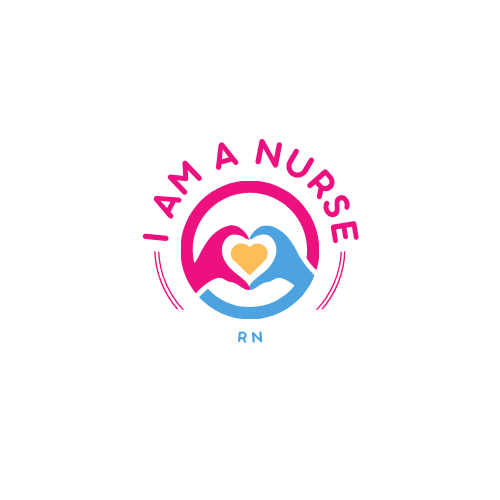## Understanding the impact of stress on heart health
Stress has become an inevitable part of our modern lives. From the moment we wake up to the time we go to bed, we find ourselves juggling multiple responsibilities and facing various challenges. Unfortunately, this constant state of stress can have a detrimental impact on our health, particularly our heart health. Over the years, numerous studies have revealed a strong link between stress and heart disease. It’s crucial to understand this connection and take proactive steps to protect our hearts.
When we experience stress, our bodies release stress hormones like cortisol and adrenaline. These hormones can lead to increased heart rate, elevated blood pressure, and inflammation, putting extra strain on our cardiovascular system. Prolonged exposure to stress can contribute to the development of conditions such as hypertension, coronary artery disease, and even heart attacks. Recognizing the impact of stress on our hearts is the first step towards taking control of our overall well-being.
The link between job stress and heart disease
For many of us, our jobs are the primary source of stress. Whether it’s tight deadlines, demanding bosses, or overwhelming workloads, the pressures of the workplace can take a toll on our mental and physical health. Research has consistently shown a strong correlation between job stress and the increased risk of heart disease. A study published in the Journal of Occupational Health Psychology found that individuals experiencing high levels of job strain had a 23% higher risk of heart attacks compared to those with lower job strain.
The nature of our work environment plays a significant role in our stress levels. Jobs that involve high levels of responsibility, long hours, and little control over decision-making can lead to chronic stress. Additionally, a lack of support from supervisors and colleagues can further exacerbate the negative effects of job stress on our hearts. It’s essential for both employers and employees to recognize the importance of mitigating job-related stress for the overall well-being of the workforce.
Common symptoms of work-related stress
Work-related stress can manifest in various ways, affecting both our physical and mental health. It’s crucial to recognize these symptoms early on and address them to prevent further damage to our hearts. Some common symptoms of work-related stress include:
- Physical symptoms: Fatigue, headaches, muscle tension, chest pain, and increased heart rate.
- Emotional symptoms: Anxiety, irritability, mood swings, depression, and difficulty concentrating.
- Behavioral symptoms: Changes in sleep patterns, increased use of substances like alcohol or tobacco, social withdrawal, and decreased productivity.
If you find yourself experiencing these symptoms due to your job, it’s vital to take them seriously and seek appropriate support and interventions.
Workplace stress statistics and trends
The prevalence of workplace stress is a growing concern in today’s fast-paced and competitive world. Let’s take a closer look at some alarming statistics and trends related to work-related stress:
- According to a survey conducted by the American Institute of Stress, 80% of workers feel stress on the job, and nearly half say they need help in learning how to manage stress.
- The World Health Organization reports that work-related stress costs global businesses around $300 billion annually due to increased healthcare costs, absenteeism, and reduced productivity.
- A study published in the journal Occupational Medicine revealed that job strain and long working hours are responsible for approximately 10% of strokes worldwide.
These statistics highlight the urgent need for effective stress management strategies in the workplace, not just for the well-being of individuals, but also for the success of organizations.
Strategies for managing stress at work
While it may not always be possible to eliminate stress entirely from our jobs, there are strategies we can implement to better manage it. Here are some practical tips to help you navigate work-related stress:
- Identify stressors: Take the time to identify the specific aspects of your job that are causing you stress. Is it a particular project, a difficult coworker, or a lack of work-life balance? Understanding the root causes of your stress can help you develop targeted solutions.
- Practice time management: Prioritize your tasks and set realistic deadlines. Break larger tasks into smaller, manageable steps to avoid feeling overwhelmed. Effective time management can help reduce stress and improve your overall efficiency.
- Establish boundaries: It’s essential to set clear boundaries between work and personal life. Avoid checking work emails or taking calls outside of working hours. Engage in activities that help you relax and recharge, such as hobbies, exercise, or spending time with loved ones.
By implementing these strategies, you can regain a sense of control over your work environment and protect your heart from the damaging effects of chronic stress.
Creating a healthy work-life balance
Achieving a healthy work-life balance is crucial for managing stress and maintaining heart health. When our lives become dominated by work, we neglect other aspects that are equally important for our well-being. Here are some tips for creating a healthier work-life balance:
- Set boundaries: Clearly define your working hours and communicate them to your colleagues. Avoid going above and beyond your designated work hours unless it’s absolutely necessary.
- Take breaks: Incorporate regular breaks into your workday. Use this time to stretch, practice deep breathing exercises, or engage in activities that help you relax and recharge.
- Make time for yourself: Prioritize self-care activities that bring you joy and help you unwind. Whether it’s reading a book, taking a long bath, or going for a walk in nature, investing in yourself is essential for maintaining a healthy work-life balance.
Remember, striking the right balance between work and personal life is not just beneficial for your heart health but also for your overall happiness and fulfillment.
Stress management techniques for the workplace
In addition to creating a healthy work-life balance, there are specific stress management techniques that can be practiced directly in the workplace. Here are a few effective strategies to help you better manage stress on the job:
- Practice mindfulness: Incorporate mindfulness exercises into your daily routine. Take a few moments to focus on your breath, observe your thoughts without judgment, and bring your attention to the present moment. Mindfulness can help reduce stress and enhance your overall well-being.
- Engage in physical activity: Physical exercise is not only beneficial for your physical health but also for your mental well-being. Find opportunities to incorporate movement into your workday, such as taking the stairs instead of the elevator or going for a walk during lunch breaks.
- Utilize relaxation techniques: Learn and practice relaxation techniques like deep breathing exercises, progressive muscle relaxation, or guided imagery. These techniques can help you relax your body and mind, reducing stress levels in the process.
By incorporating these stress management techniques into your work routine, you can create a more positive and productive work environment while safeguarding your heart health.
Seeking support: Employee assistance programs and counseling services
Sometimes, managing work-related stress on your own may not be enough. In such cases, it’s crucial to seek additional support from employee assistance programs (EAPs) or counseling services provided by your employer. EAPs offer confidential counseling services, resources for stress management, and referrals to mental health professionals if needed. These programs can provide valuable support and guidance in navigating work-related stress and its impact on your heart health. Don’t hesitate to reach out and utilize these resources if you need them.
Promoting a stress-free work environment
Creating a stress-free work environment requires a collective effort from employers and employees. Here are some strategies that can be implemented to promote a healthier workplace:
- Encourage open communication: Establish a culture of open communication where employees feel comfortable expressing their concerns and seeking help when needed. Provide regular opportunities for feedback and address any issues promptly.
- Offer stress management programs: Implement stress management programs, workshops, or training sessions to educate employees on effective stress management techniques. This investment in employee well-being can lead to improved morale and productivity.
- Foster work-life balance: Encourage work-life balance by offering flexible work schedules, remote work options, and paid time off. Recognize and appreciate employees who prioritize their well-being and encourage others to do the same.
By prioritizing the well-being of employees and creating a supportive work environment, organizations can help reduce work-related stress and protect the heart health of their workforce.
Conclusion: Taking control of your heart health in the workplace
In conclusion, the connection between job stress and heart disease cannot be ignored. It’s essential to recognize the impact of stress on our hearts and take proactive measures to manage it effectively. By understanding the link between job stress and heart disease, recognizing common symptoms of work-related stress, implementing stress management strategies, and seeking support when needed, we can take control of our heart health in the workplace. Remember, your well-being should always be a priority, and by prioritizing self-care and stress management, you can thrive both personally and professionally.
Call to Action: To learn more about stress and its impact on your health, visit the World Health Organization’s website: Stress and Health https://www.who.int//news-room/questions-and-answers/item/stress/?gclid=CjwKCAjwsKqoBhBPEiwALrrqiE9iAll6JzZWeZwc354hwkCwVcuw1paweHPBpaSPsAQcyFCWw6NTOhoClVUQAvD_BwE.

